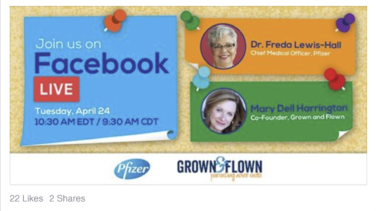Over the past year, social video platforms such as YouTube, Facebook, Instagram, Twitter, and Snapchat have rapidly innovated—adding new ad products and user features at dizzying speeds. While many of these updates resemble the competition in functionality, key differences remain in viewer behavior, marketing strategy, and advertising outcomes. But it’s crucial that marketers seek to understand these distinctions, and move toward a comprehensive, cross-platform video advertising approach. Frankly, it’s essential: More than 1B hours of video are streamed on YouTube daily, while Facebook sees 8B daily video views.
Marketers must approach these platforms holistically, and capitalize on the strengths of each through an understanding of each platform’s specific nuances. For example, marketers can capture audience attention on Facebook with video optimized for mobile and muted playback, take advantage of extended user viewing sessions on YouTube by producing long-form content, and grow subscribers through a frequent publishing schedule.
Here’s a deeper dive into how pharma marketers can use social video to reach and engage consumers:
Know What Your Audience is Watching
On YouTube, the audience interested in healthcare and pharmaceuticals skews middle-aged—more than 50% of healthcare viewers are between the ages of 45 and 64. These viewers are watching content that’s longer than 120 seconds, with nearly 60% of the most-viewed videos in the healthcare and pharmaceutical space clocking in at two minutes or longer. Interestingly, viewers are overwhelmingly seeking out animated content—of top videos in this space, animated content attracts 65% of total views. Video topics tend to be educational, informing viewers on complex medical treatments, conditions, and procedures. YouTube is the second largest search engine after Google, so viewers are turning to the platform to seek out answers, looking to understand and make sense of their medical situations.
Videos produced by creators dominate the healthcare space on YouTube, attracting 35X more views than brand-owned content. Brand marketers should follow creator best practices in their content strategy to help close this gap. Additionally, by targeting ads against popular and rising creators in the healthcare space, pharma marketers can capitalize on the subscriber base that creators have already amassed, and reach a captive audience.
Know How Your Audience is Watching
Audiences are clearly turning to YouTube for medical insights, making the platform particularly suited to marketers striving to increase brand awareness. Pixability’s data shows that YouTube delivers high audience retention, with a 6X higher view-to-completion rate than Facebook on average. However, video ads on Facebook, Instagram, and Twitter drive much higher click-through rates, surpassing YouTube on average by 165%, 162%, and 186%, respectively—these platforms are thus particularly effective at driving viewers to a brand’s website to learn more. Additionally, a majority of the healthcare audience is on mobile. By creating content specifically for mobile devices, marketers can reach viewers looking for immediate answers to their healthcare questions.
Audiences continue to look to social video to learn more about medicine. And as digitally savvy audiences grow older, they’ll increasingly turn to these platforms to learn more about their healthcare needs—smart pharma marketers must meet them there.





